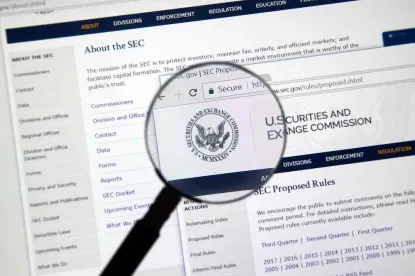On Wednesday, August 18, 2021, the U.S. Securities and Exchange Commission (“SEC”) charged three Netflix software engineers and two “close associates” with insider trading in Netflix shares that netted them over $3 million in illegal profits. They were caught by the SEC Market Abuse Unit, whose Analysis and Detection Center uncovered the operation using data analytic tools that identified the group’s “improbably successful” trading.
The Market Abuse Unit
In 2010, the Commission had reorganized its Enforcement Division and created the Market Abuse Unit (“MAU”). Until then, according to a 2021 publication of CNL Securities Corp entitled “Big Data is Watching You;”
The SEC used to act like a security guard when it came to enforcement. Today it acts like a surveillance system that’s monitoring markets 24/7.
As portrayed in a 2019 article in the CLS Blue Sky Blog, the MAU, one of five specialized units in the Division of Enforcement, was “tasked with developing new investigative approaches to insider training enforcement” with the goal of identifying “patterns, connections and institutions at the outset of investigations.” To that end, the MAU was to develop and implement “automated trading data analysis” to use in trading investigation. As the then Chair of the Commission, Mary Jo White, testified before Congress in 2015, the MAU was using “new analytical tools to detect suspicious trading patterns.” Part of this effort involves the use of the Advanced Relational Trading Enforcement Metrics Investigation System (“ARTEMIS”) to identify “suspicious trading patterns and relationships among multiple traders.” The MAU uses ARTEMIS to review some 10 billion equity and option trades.
Streaming Data
It was precisely this MAU approach that led to the SEC’s August 18 charges AND a parallel criminal action by the U.S. Attorney’s Office for the Western District of Washington. The three Netflix software engineers traded based on changes, especially growth, in the Netflix subscriber base. They used this information BEFORE it was disclosed in periodic earnings announcements. After the lead engineer left Netflix in 2017, he continued to obtain confidential subscriber information from a friend and former colleague. Another former colleague tipped the lead wrongdoer concerning the July 2019 earnings announcement. The engineers used encrypted messages and paid cash kickbacks in an attempt to avoid detection. But the MAU identified the pattern of “improbably successful” trading in Netflix stock.
The three software engineers consented to the entry of civil judgments against them in the case brought by the SEC. Their leader also consented to the entry of a bar against his serving as an officer or director of a public company. One of their colleagues, who passed on the July 2019 earnings information, also consented to the entry of a judgment against him and consented to pay a civil penalty of almost $73,000. The other colleague did consent to the entry of a civil judgment against him.
The criminal case remains open against the three defendants. As Joseph Sansone, head of the MAU, is quoted as saying:
This case reflects our continued use of sophisticated analytical tools to detect, unravel and halt pernicious insider trading schemes that involve multiple tippers, traders, and market events.
So the software engineers, although smart enough to help create Netflix, proved unable to deceive the MAU.



 />i
/>i
